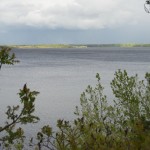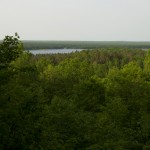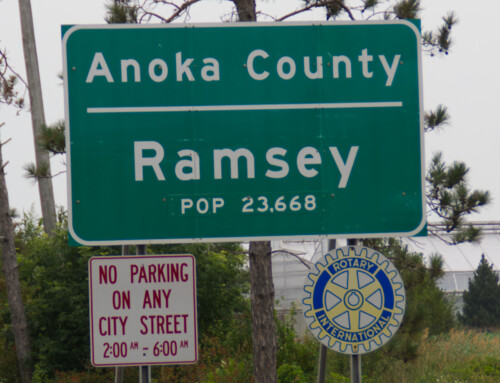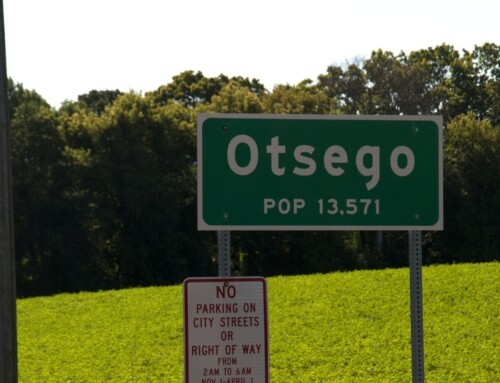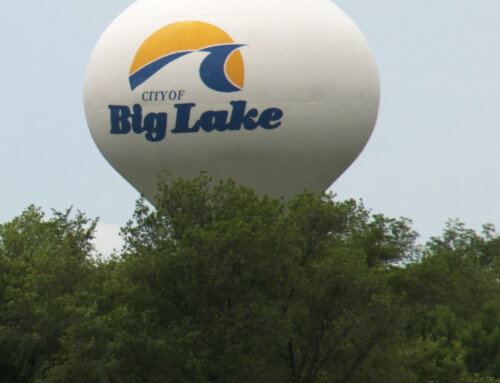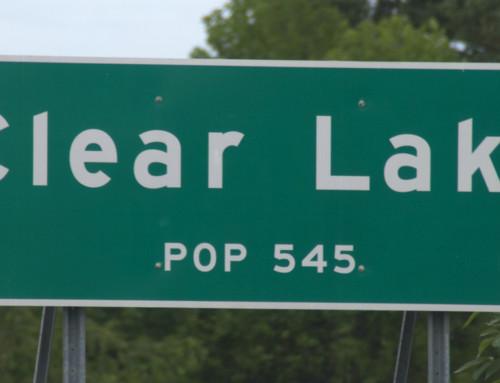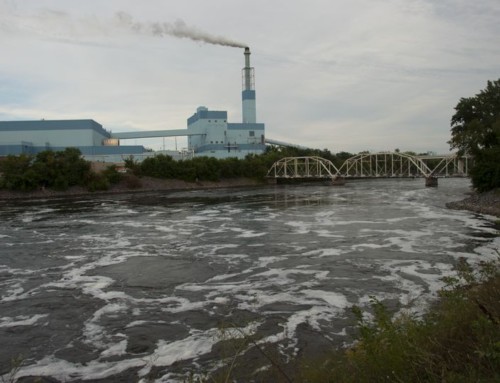Introduction
Some places are special and have been for a long time, maybe because they have a reliable and diverse supply of food and offer predictable shelter, or perhaps because the place is imbued with supernatural qualities. Or maybe it’s just the food and shelter. Regardless, Sandy Lake is one of those special places that emits an irresistible pull to stay put and call it home.
Visitor Information
Have questions? Contact the good folks at the McGregor Area Chamber of Commerce (218.768.3692).
History
Sandy Lake, whose name is derived from the Ojibwe word Kah-me-tah-wung-a-guma (Lake of Sandy Waters), is rich with life, from the abundant population of fish in its depths to the beds of wild rice that line its edges. It is at the southwest end of an ancient travel route that fur traders called the Savanna Portage that connected the Great Lakes to the Mississippi River. Copper artifacts found along the trail suggest that this was a trade route for thousands of years. It was a busy place during the fur trading era (mid-18th century to mid-19th century) but was hardly a beloved passage.
The primary route followed the St. Louis River to the East Savanna River, followed by a land portage to the West Savanna River and on to Sandy Lake. The Sandy River connects Sandy Lake to the Mississippi River via a short channel. The land portage was about six miles long or twelve “poses” as the French called each leg of the trip. Goods were usually hauled from one point to another to make the effort manageable; one complete move from point to point was called a pose. Much of the portage was through a tamarack swamp, which, as I’m sure you can guess, was an unpleasant experience. Lieutenant James Allen, who traveled with Henry Schoolcraft on the 1832 expedition to find the headwaters of the Mississippi, wrote the following about the portage:
“No idea can be formed of the difficulty of this portage without witnessing it. The men, with heavy loads, are sometimes forced to wade through a swamp of half a mile, full of roots and bushes, and over their knees in mire at every step. And where the road is dry, it is generally over a hill, or across a gully, the steep banks of which are worse to pass than the swamps.”
Given the importance of the transit route that passed through the lake, it’s no surprise that folks built settlements here; in fact, archeological evidence suggests that people have been living next to Sandy Lake for thousands of years. In more recent centuries, the Dakota had a village at the lake for generations, then, as the Ojibwe moved into Minnesota, one of their first and most important village sites was at Sandy Lake.
In 1794, the Northwest Fur Company built a trading post at the lake. An exhausted Zebulon Pike reached the post on January 8, 1806 and stayed for a life-saving twelve days. While that trading post closed in 1816, the American Fur Company operated a post at Sandy Lake for a few years beginning in 1826.
By the mid-19th century, the world was changing for Native Americans east of the Mississippi River. In 1850 President Zachary Taylor ordered all Ojibwe in Michigan, Wisconsin, and Minnesota removed to Sandy Lake. They were told, that, once they were all gathered at the lake, they would get the annuity payments due to them. Thousands of Ojibwe traveled to Sandy Lake in the fall, only to discover that the US agents and Minnesota’s Territorial Governor Ramsey refused to pay them. Food rations ran low; much of it was tainted, anyway. Hundreds died from dysentery and other diseases, and the surviving Ojibwe had to travel back to their communities in the middle of winter. In spite of many attempts over the years to move them out, a community of Ojibwe has continued to live at Sandy Lake, today on a 32-acre tract officially recognized as reservation land.
At the end of the 19th century, Congress authorized construction of a dam at Sandy Lake, as part of the Headwaters Dam Project, that aimed to raise water levels on the Mississippi River south of the Twin Cities. The first dam, a wooden structure, was completed in 1895 and included a lock so steamboats supplying the logging camps in the Sandy Lake area could get through. A concrete dam replaced the wooden one in 1911. By the early 20th century, Sandy Lake became the scene of a vibrant vacation business, with many small, family-run resorts around the lake.
Sandy Lake today still has that dam, a small community of Ojibwe, lots of fish and wild rice, but those small resorts are gone, replaced by expensive vacation homes that now surround the lake. This place, even in the 21st century, continues to have a certain magic that compels people who visit it to stick around for a while.
Exploring the Area
At Savanna Portage State Park, you can get a taste of the old overland route as several hiking trails follow parts of the portage. The park has a number of other trails, historic sites, and swimming beaches.
Sandy Lake Recreation Area, near the dam, has a range of activities for visitors to pass the time, including a swimming beach and an interpretive center in the original lock house.
If you want a more natural experience that you don’t want to share with a bunch of other folks, nearby Aitkin Lake, which is connected to Sandy Lake by a short channel, has very little development around it. Weeds float on the water, unanchored to the bottom; the shores are lined with wild rice beds; and the loudest sounds are the calls of loons and frogs.
**Sandy Lake is covered in Road Tripping Along the Great River Road, Vol. 1. Click the link above for more. Disclosure: This website may be compensated for linking to other sites or for sales of products we link to.
Where to Eat and Drink
Zorbaz at Big Sandy Lake is a regional chain that prepares good, affordable food (the most popular items are pizza and Mexican entrées) and regular drink specials that won’t strain your wallet. The restaurant is five miles north of McGregor on State Highway 65.
Big Sandy Lake Lodge offers a range of food from sandwiches to fine dining entrées; patio seating is a good option when the weather cooperates.
Where to Sleep
Camping
Savanna Portage State Park has 61 sites in a wooded area, plus backpacker sites. They also rent a rustic cabin and a one-bedroom guesthouse.
Sandy Lake Recreation Area has about 60 sites in an attractive, shaded if rather compact setting; there are electric and non-electric sites and many are right on the lake.
Aitkin Lake Resort has five sites with water and electric in a bucolic resort setting, complete with shower house and paddleboats.
Resorts
Aitkin Lake Resort has a few well-kept housekeeping cabins in a beautiful lakeside location far from the road and the rest of the world; bring towels and a willingness to chill.
Big Sandy Lake Lodge and Resort is a modern, full-service resort on the southeast side of the lake. They rent 18 rooms in the lodge, plus cabins and townhouses.
Where to Go Next
Next stop downriver: Palisade
Next stop upriver: Ball Bluff
Community-supported writing
If you like the content at the Mississippi Valley Traveler, please consider showing your support by making a one-time contribution or by subscribing through Patreon. Book sales don’t fully cover my costs, and I don’t have deep corporate pockets bankrolling my work. I’m a freelance writer bringing you stories about life along the Mississippi River. I need your help to keep this going. Every dollar you contribute makes it possible for me to continue sharing stories about America’s Greatest River!
©Dean Klinkenberg, 2012,2015
